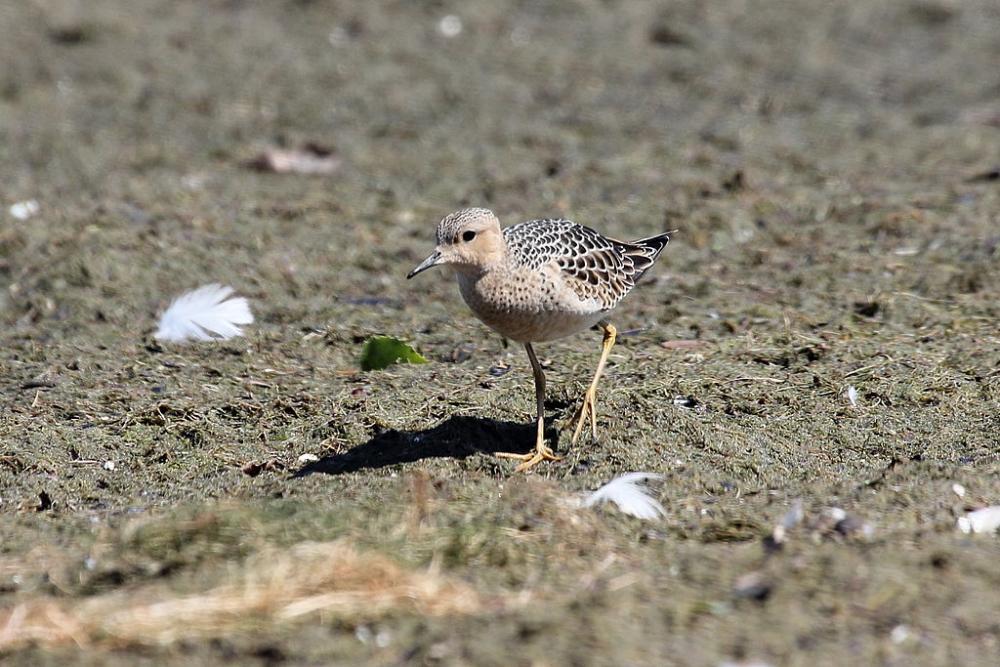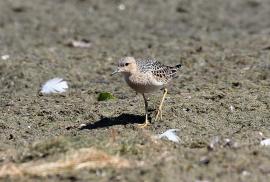Guide to Boreal Birds
Overview
This species looks like a small, buffy edition of the Upland Sandpiper, at times its grassland associate. It is very tame and when approached merely runs through the short grass instead of flying off. Like the American Golden-Plover, it undertakes an amazing migration in both spring and fall. After the nesting season in the far Northwest, it migrates southward on a broad front, eventually ending up on the Argentine pampas, where it spends the winter. On the return passage in spring its movements are much more confined, carrying it chiefly up the Mississippi Valley and to the West, but ultimately back to the Arctic shores of Alaska and Canada.
Description
8" (20 cm). A starling-sized sandpiper with a small head. Underparts and face buff, legs dull orange-yellow. Bill short and straight.
Voice
A low tik-tik-tik.
Nesting
4 pale buff, brown-blotched eggs in a grass-lined nest on the Arctic tundra.
Habitat
Breeds on dry tundra; visits short-grass prairies, fields, and meadows on migration.
Range/Migration
Breeds in northernmost Alaska and Canada. Migrates mainly through Great Plains, but small numbers appear on East Coast and smaller numbers on West Coast. Winters in South America.



